J.P. Instruments EDM-930 Handleiding
J.P. Instruments
Niet gecategoriseerd
EDM-930
Bekijk gratis de handleiding van J.P. Instruments EDM-930 (52 pagina’s), behorend tot de categorie Niet gecategoriseerd. Deze gids werd als nuttig beoordeeld door 67 mensen en kreeg gemiddeld 4.9 sterren uit 34 reviews. Heb je een vraag over J.P. Instruments EDM-930 of wil je andere gebruikers van dit product iets vragen? Stel een vraag
Pagina 1/52

FAA Approved Installation Manual for the Report No 908
EDM-900 and EDM- 930 Page 1 of K52 Rev
Primary Engine Data Management System Date 5-02- 17
TABLE OF CONTENTS
Section Page
1. Revisions 2______________________________________________________________________________________
2. _________________________________________________________________________________ Read This First 2
3. Instrument Labeling ______________________________________________________________________________ 5
4. Primary TSO Label ______________________________________________________________________________ 5
5. Operation and Abbreviations ______________________________________________________________________ 6
6. Remote Alarm Light EDM 900 7_____________________________________________________________________
7. Locating and Installing the Indicator and Remote Alarm Display (RAD and Alert Light) _______________________ 10
8. EDM-900/930 Key information installation __________________________________________________________ 12
9. Routing the Wiring Harnesses _____________________________________________________________________ 13
10. Pressurized Aircraft wire Routing __________________________________________________________________ 13
11. Power Connection ______________________________________________________________________________ 14
12. Probe Wiring __________________________________________________________________________________ 14
13. Exhaust Gas Temperature Probe (EGT) Installation ___________________________________________________ 15
14. Cylinder Head Temperature (CHT) Probe Installation __________________________________________________ 16
15. Radial Engine CHT (spark plug gasket) _____________________________________________________________ 16
16. Outside Air Temperature (OAT) Probe Installation ____________________________________________________ 16
17. Oil Temperature Probe Installation ________________________________________________________________ 17
18. Oil Pressure Sensor Installation ___________________________________________________________________ 17
19. Fuel Pressure Sensor Installation using combination sensor _____________________________________________ 18
20. Ammeter Shunt Installation _______________________________________________________________________ 19
21. General Fuel Flow Transducer Installation __________________________________________________________ 20
22. ___________________________________________________________________ 22 Fuel Level Sender Wiring Types
23. _______________________________________________________________ 28 Fuel Flow Totalizer, Refuel Question
24. GPS Interface _________________________________________________________________________________ 28
25. Manifold Pressure (MAP) Sensor __________________________________________________________________ 28
26. RPM Sensor installation _________________________________________________________________________ 29
27. EDM-900/930 Specifications and Limitations _________________________________________________________ 31
28. EMI Radio Test and functional check:_______________________________________________________________ 32
29. Component Parts _______________________________________________________________________________ 33
30. Weight and Balance Data ________________________________________________________________________ 35
31. Pilot Programming _____________________________________________________________________________ 35
32. Programming the HP Constant ____________________________________________________________________ 36
33. Programming the MAP __________________________________________________________________________ 36
34. Selecting Fuel Pressure Type (EDM-900 only) ________________________________________________________ 36
35. Customizing Non Primary Data (EDM900 only)- ______________________________________________________ 37
36. K Factor ______________________________________________________________________________________ 37
37. Fine tuning the K Factor _________________________________________________________________________ 38
38. Adjusting the K Factor___________________________________________________________________________ 39
39. Programming Accumulate Trip Total _______________________________________________________________ 39
40. Trouble Shooting _______________________________________________________________________________ 40
41. GPS Interface Diagnostics _______________________________________________________________________ 41
42. _______________________________________________ 42 Connector Pin Assignments on EDM, J1 through J5
43. Connector Pin Assignments on EDM, J1 through J5 ___________________________________________________ 43
44. J3 RPM, MP, Oil-P _____________________________________________________________________________ 46
45. Appendix A onnector Pin Assignments on EDM, J1 J2 Only with ARINC 429C- _____________________________ 50
46. Appendix B ICA _______________________________________________________________________________ 51
The Owner of the EDM-900/930 must keep this manual
J.P. INSTRUMENTS
PO BOX 7033
HUNTINGTON BEACH CA
Last printed 5/1/2017 3:28:00 PM

FAA Approved Installation Manual for the Report No 908
EDM-900 and EDM- 930 Page 2 of K 52 Rev
Primary Engine Data Management System Date 5-02-17
1. Revisions
REV
Description
Date
Approval
G
Added new pictures of 900 and 930, page 6. Abbreviations page 4. Revised how the
JPI data base functions Added revision box. Page 2. Added fuel level , page 3.
calibration, page 22. Renumbered all pages.
9- - 28 2011
JFP
H
Revised to include new trouble shooting section for ICA and renumber pages. Updated
pressure sensors to i2s
12 02 2011- -
JFP
I
Revised TSO Label to show lighting change and added ARINC 429 wire chart
1- - 18 2013
JFP
J
Updated Part Numbers and Added new ICA and Pressure bulkhead paragraph
5- - 24 2014
JFP
K
Updated for new features adding digital fuel gauges with fuel flow monitoring per the
“Flight manual”
4- - 08 2016
JFP
2. Read This First
• The following notes apply to a new installation. Read this section before proceeding.
• The JPI warranty found in the back of the pilots guide clearly states that JPI will replace defective parts under
warranty, but does NOT cover labor to remove or install any parts.
• The most common cause of probe problems is poor terminal crimps. Crimp ring terminals with AMP tool or
equivalent. Fold back the wire double before crimping terminals.
• - - Do not use aluminum fittings or Teflon tape or pipe sealant with the FXT 201 or FXT 231 fuel flow transducer.
• -Write down the K factor engraved on the side of the fuel flow transducer here _______. Once the transducer is
installed and covered with the fire sleeve, you will not be able to access this K factor.
• Determine the locations of all holes before drilling to ensure that nothing interferes with the probe, clamp, clamp
screw or wire.
• Provide service loops at the instrument so that it can be moved for maintenance or troubleshooting.
• Thermocouple wire length is not critical. Trim to required length, allowing for service loops at the engine so that
probes can be swapped with probes on adjacent cylinders for troubleshooting purposes.
• Dress all wires away from high temperature components such as exhaust stacks.
• -Never splice thermocouple wire using copper wire. Use only K type thermocouple wire. Solder using zinc
chloride flux such as Nokorode brand rosin flux alone – will not work.
• Observe correct polarity on all probe wires. Connect like colors together (red to red, yellow to yellow).
• The instrument must be grounded at the engine, not at the avionics ground.
• - - Record the installation of the EDM 900 or EDM 930 on a FAA form 337. Make an entry in the aircraft logbook.
• Note: Removal of probes, sensors and the instrument is the reverse of the installation procedure.

FAA Approved Installation Manual for the Report No 908
EDM-900 and EDM- 930 Page 3 of K 52 Rev
Primary Engine Data Management System Date 5-02-17
Do not install a non 900/930 in a certified aircraft. A certified EDM 900/930 lists see AML- -certified EDM -
.
If the EDM 900/930 is configured to monitor the aircrafts fuel tanks, the EDM 900/930 must be calibrated to the - -
aircraft fuel system and the EDM 900/930's accuracy must be verified before flying the aircraft.-
Before allowing the aircraft to be flown, verify the instrument markings displayed on the EDM 900/930 screens are -
accurate with the aircraft’s POH for every function displayed on the EDM-900/930.
The use of the EDM 900/930 requires recurring training for any pilot who will be flying the aircraft in which it is -
installed. Recurring training should include reading the EDM 900/930 Installation Manual and seeking a flight -
instructor for proper interpretation of information being displayed to the pilot.
Fuel Level Accuracy Limitations:
1. Angle of Attack - - The EDM 900/930 must be calibrated with the aircraft in a cruise angle of attack. If
the aircraft is in an angle of attack other than cruise, the EDM-900/930 may display inaccurate fuel levels
(depending on the mounting location and type of sensor used). If your aircraft does not sit at a cruise
angle of attack when on the ground, it may not display accurate fuel levels. Test your aircraft at
different angles of attack to see the effects on the EDM 900/930 fuel level readings.-
2. Full Fuel Readings - As a tank is filled the fuel sensor may not be able to detect the fuel entering
the upper corners of the fuel tank. If this is the case with your sensor, the EDM 900/930 will display lower-
fuel levels than the actual fuel in the tanks when the tanks are full. When the fuel level drops to a
point where the fuel sensor starts to detect a change, the displayed fuel level should be accurate.
Check the accuracy of your system by comparing the displayed fuel levels on the EDM-900/930
to the fuel levels listed in the flight manual at each fill up.
3. Low Fuel Readings - - Do not rely on the EDM 900/930 to determine the fuel level in the tank
for an indicated tank level below 1/8. You should always fly the aircraft in such a manner as to
maintain at least the FAA minimum fuel requirements in the aircraft at all times.
4. Improper Calibration - - If the EDM 900/930 has not been properly calibrated it will not display accurate
fuel levels in the tanks. It is important you verify the accuracy of the EDM 900/930. Always crosscheck-
your measured fuel levels in the tanks with the readings on the EDM 900/930 before each flight.-
5. Poor Connections - Poor connections between the wires leading from the EDM to the fuel
sensors can become intermittent. An intermittent connection most likely will show up as wandering or
inaccurate readings on the EDM 900/930. Always crosscheck your measured fuel levels in the tanks-
with the readings on the EDM-900/930 before each flight.
6. Defective Fuel Level Sensors - Fuel sensors can become intermittent or change resistance
with age. It is not uncommon to find intermittent problems even in new sensors. An intermittent
problem with a fuel sensor most likely will show up as wandering or inaccurate readings on the EDM-900/930.
Always crosscheck the measured fuel levels in the tanks with the readings on the EDM-900/930 at
each fill up. If you ever find an inaccuracy issue or any other problem with a fuel level display on
the EDM-900/930, troubleshoot and fix the problem before the next flight.
DETERMINE THE FUEL LEVELS IN THE AIRCRAFT.
1.The use of the EDM-900/930 does not eliminate or reduce the necessity for the pilot to use good flight planning,
preflight and in flight techniques for managing fuel. It is important the pilot adopt the practices listed below. If you -
are not familiar with these techniques, contact the FAA to acquire proper training.
2. Flight Planning - Always calculate the fuel requirement for each leg of a flight, including any
alternate plans for bad weather. Keep this information available in the aircraft during the
flight. Keep a chart of the published fuel flows for various flight/engine conditions in the
Product specificaties
| Merk: | J.P. Instruments |
| Categorie: | Niet gecategoriseerd |
| Model: | EDM-930 |
Heb je hulp nodig?
Als je hulp nodig hebt met J.P. Instruments EDM-930 stel dan hieronder een vraag en andere gebruikers zullen je antwoorden
Handleiding Niet gecategoriseerd J.P. Instruments

15 Augustus 2023

15 Augustus 2023

15 Augustus 2023
Handleiding Niet gecategoriseerd
- Balay
- Dimavery
- Wiko
- UNYKAch
- Beper
- TechN
- Kreg
- MotorScrubber
- Horizon
- Wren & Cuff
- N'oveen
- Mio
- Barco
- Avid
- Best
Nieuwste handleidingen voor Niet gecategoriseerd
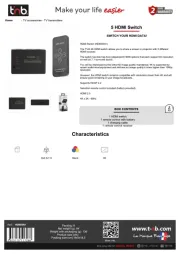
15 September 2025
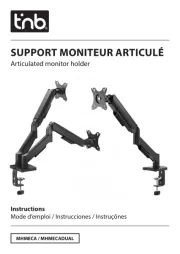
15 September 2025
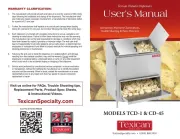
15 September 2025
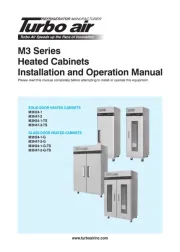
15 September 2025
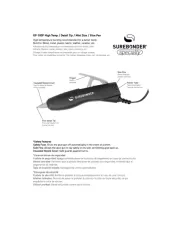
15 September 2025

15 September 2025
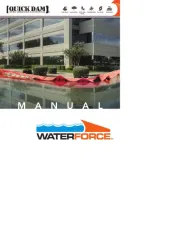
15 September 2025

15 September 2025
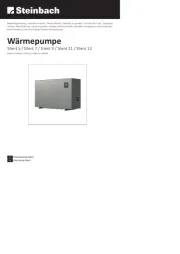
15 September 2025
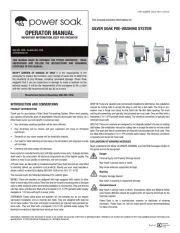
15 September 2025